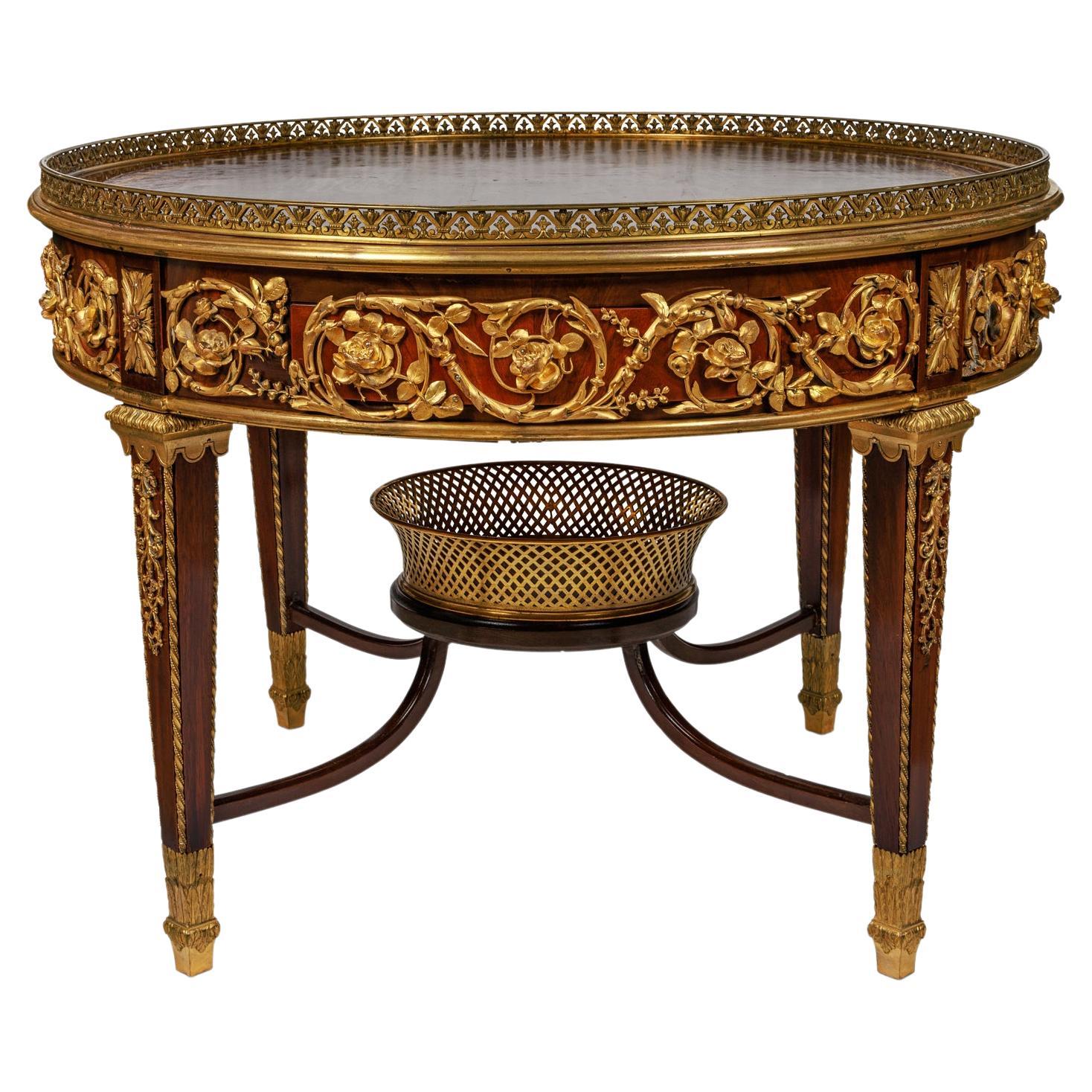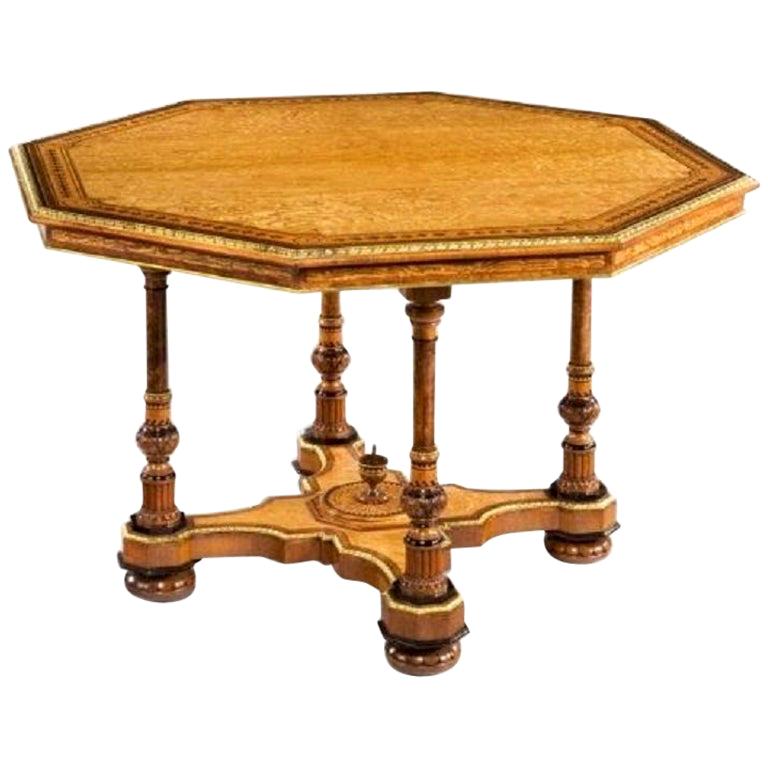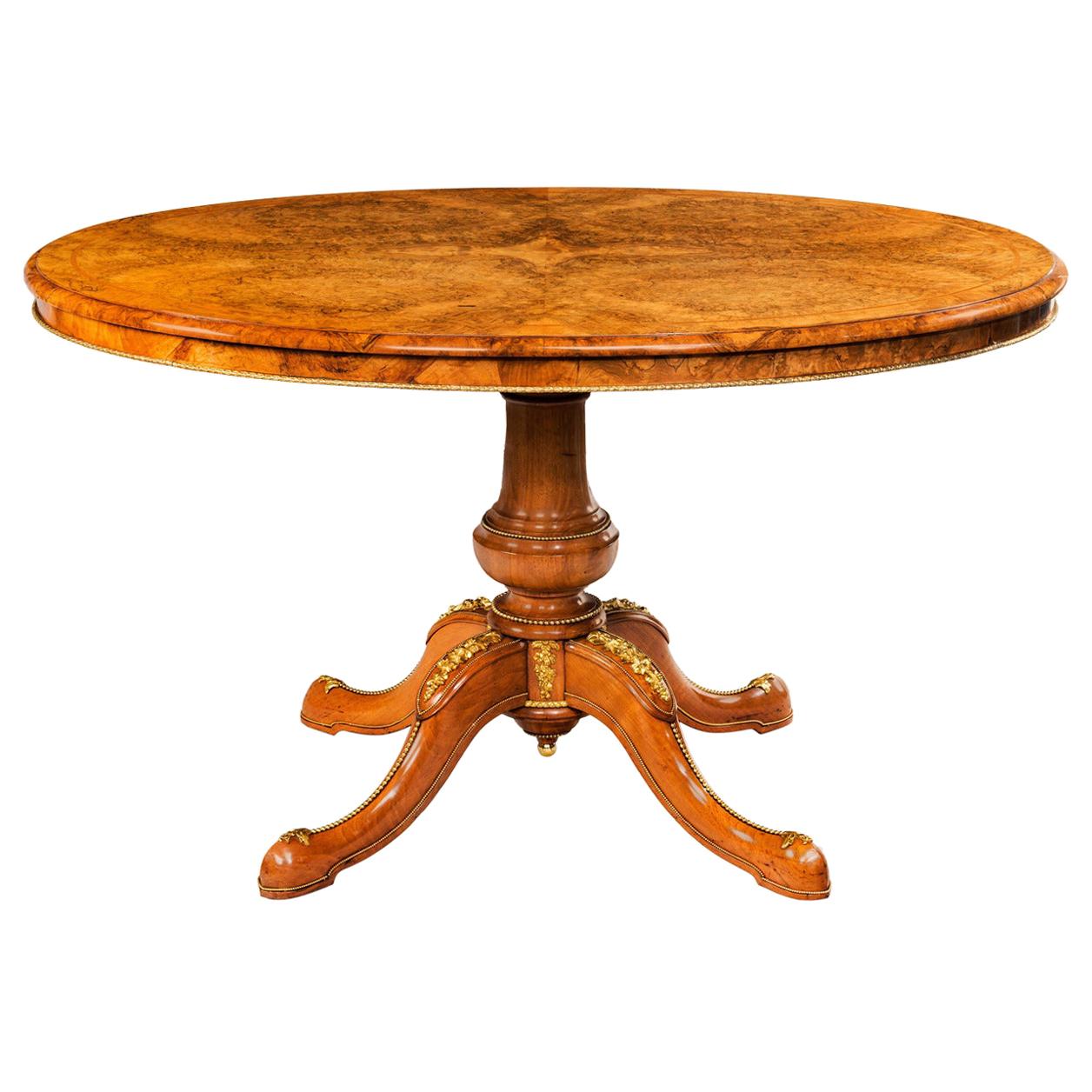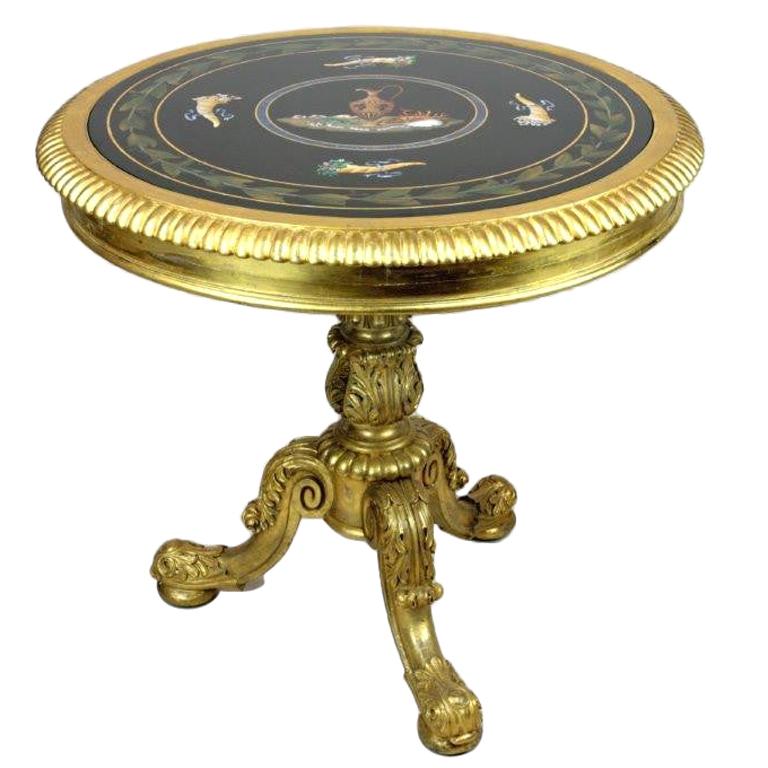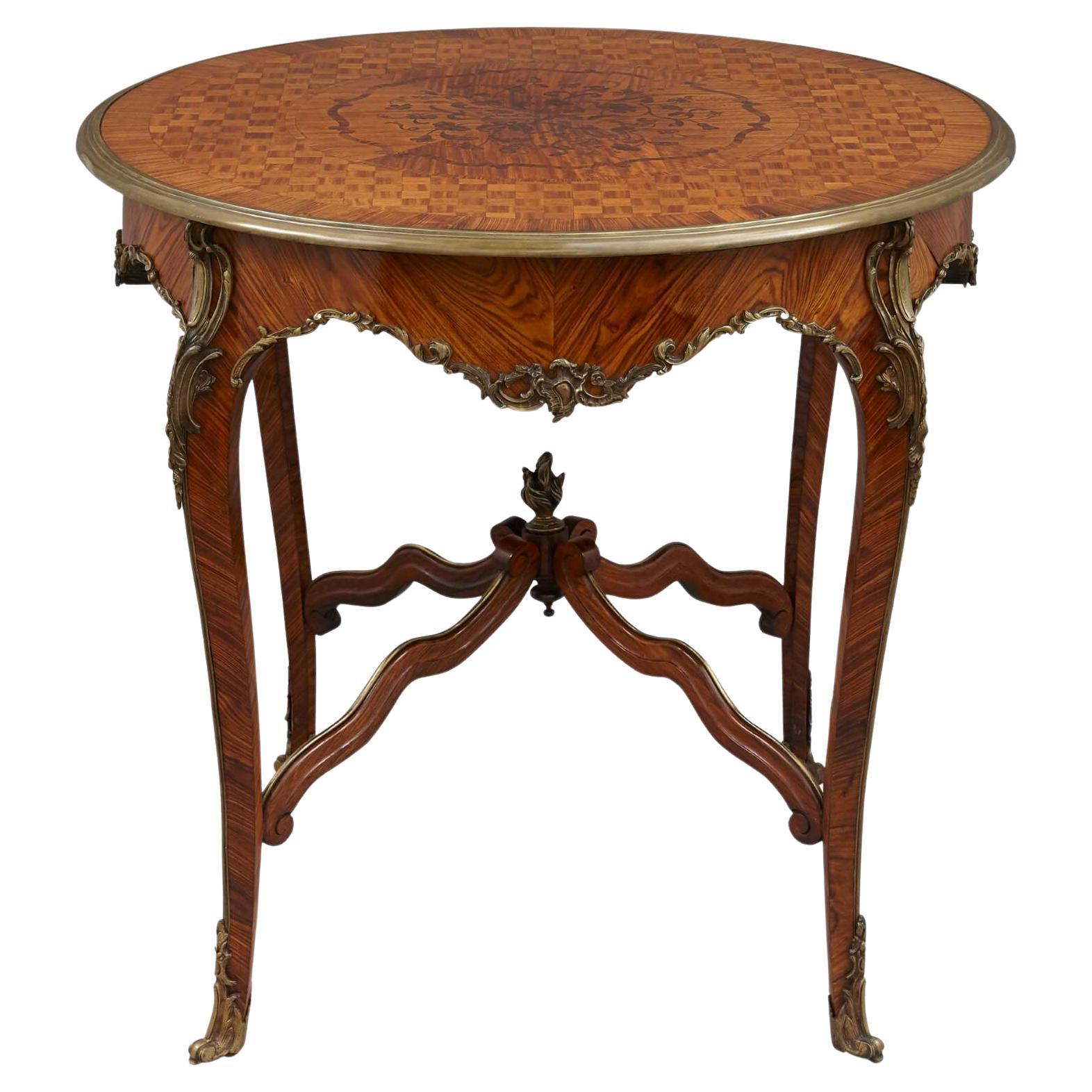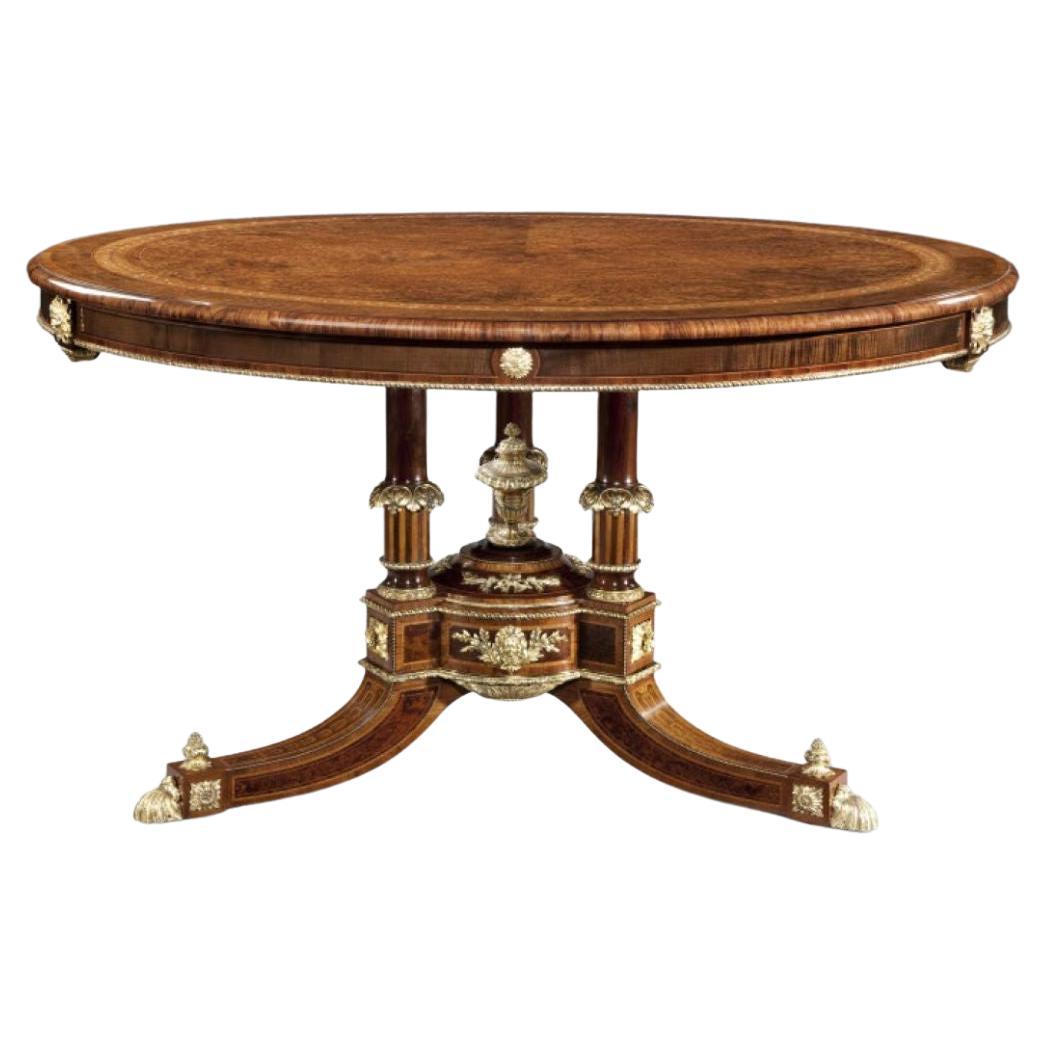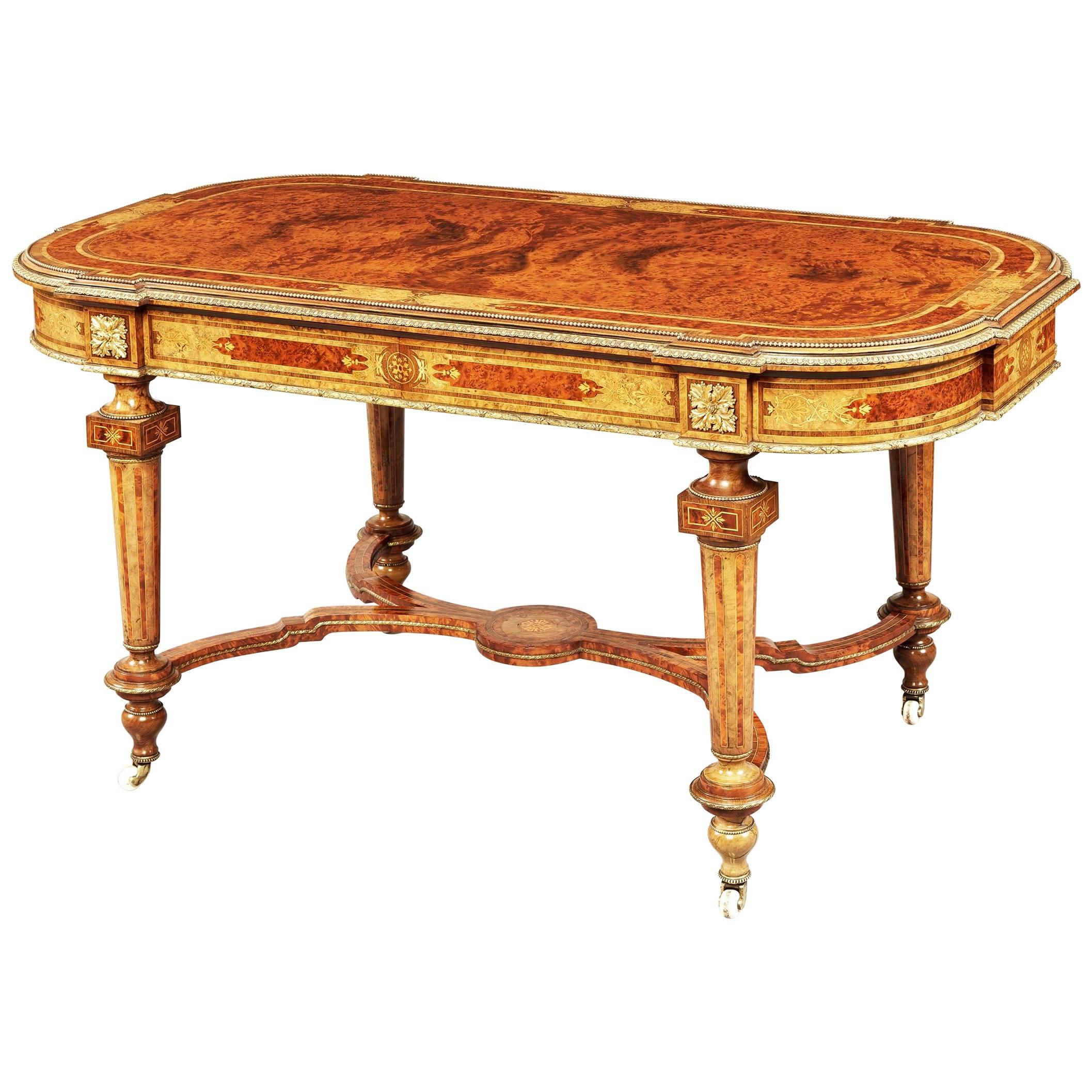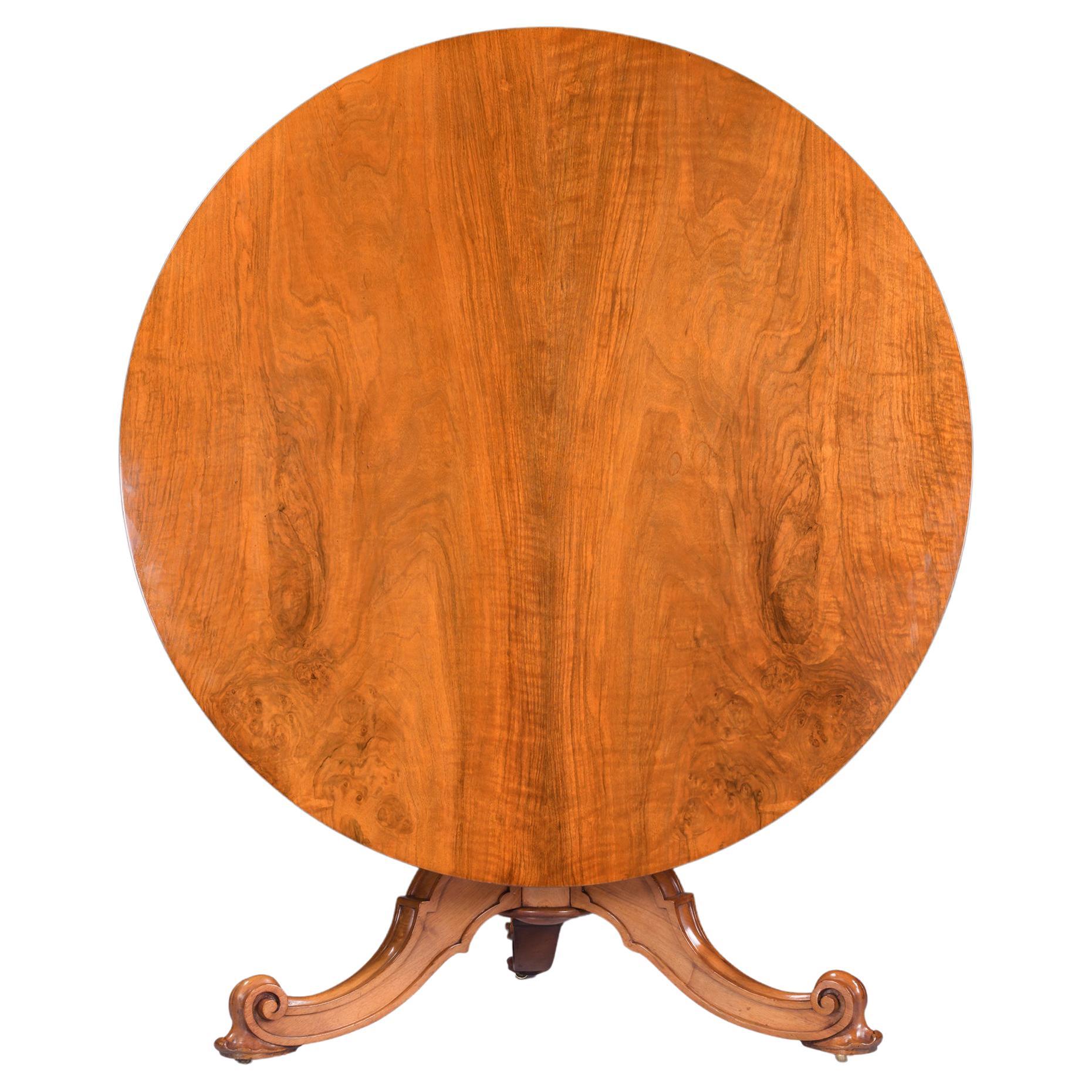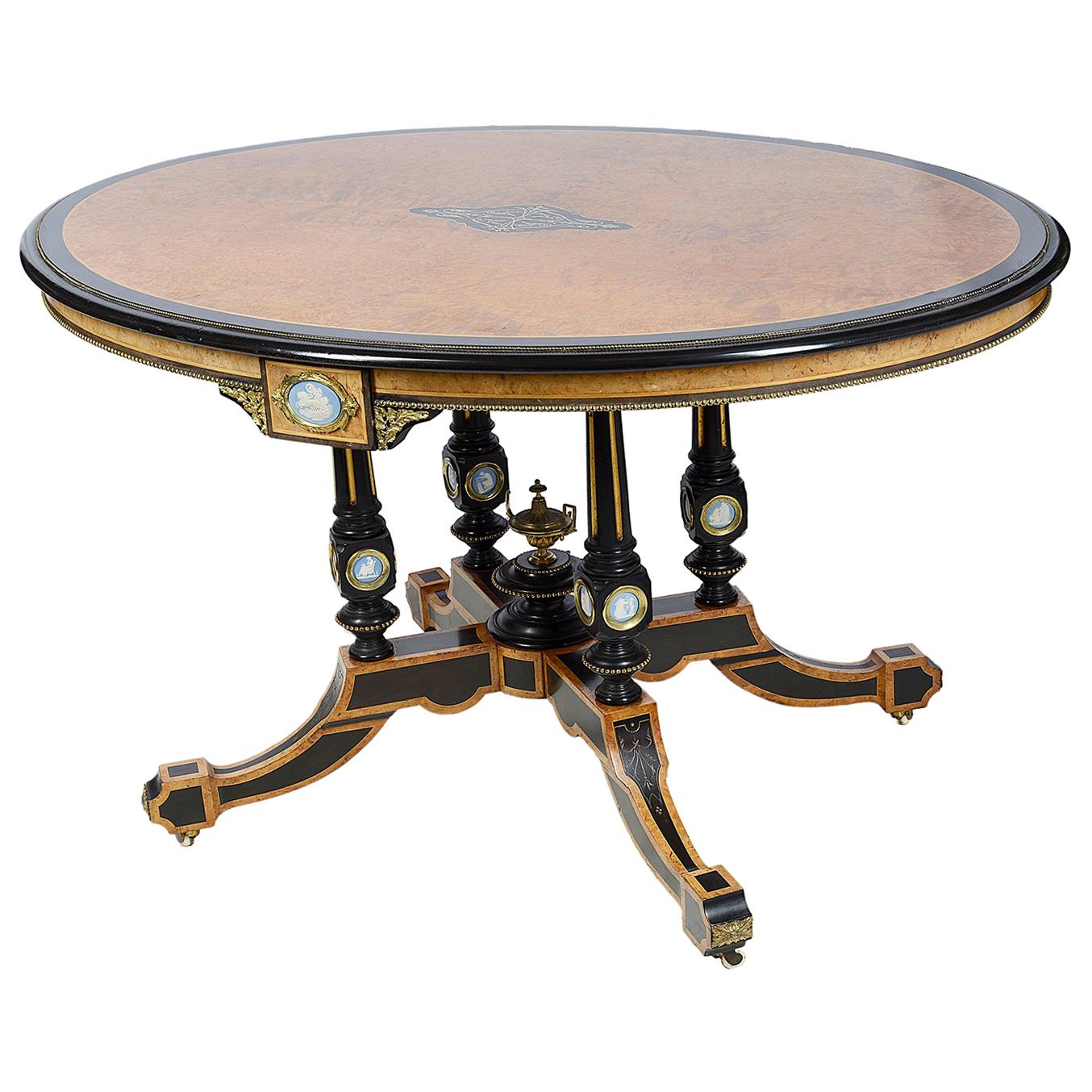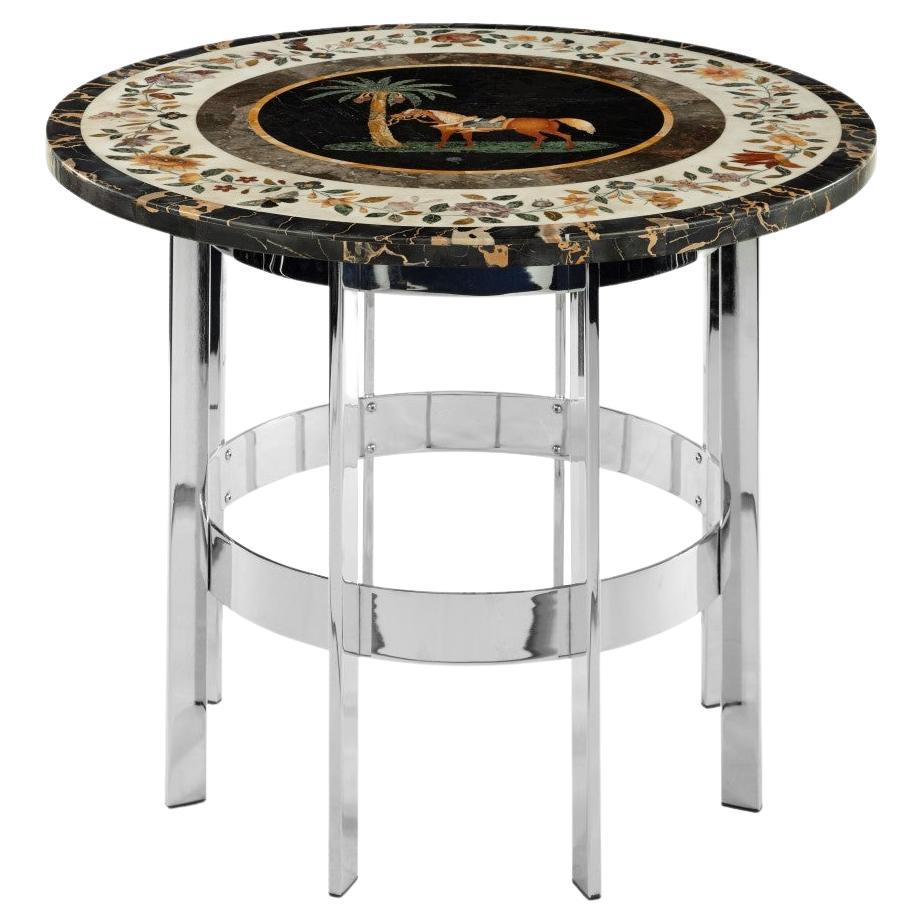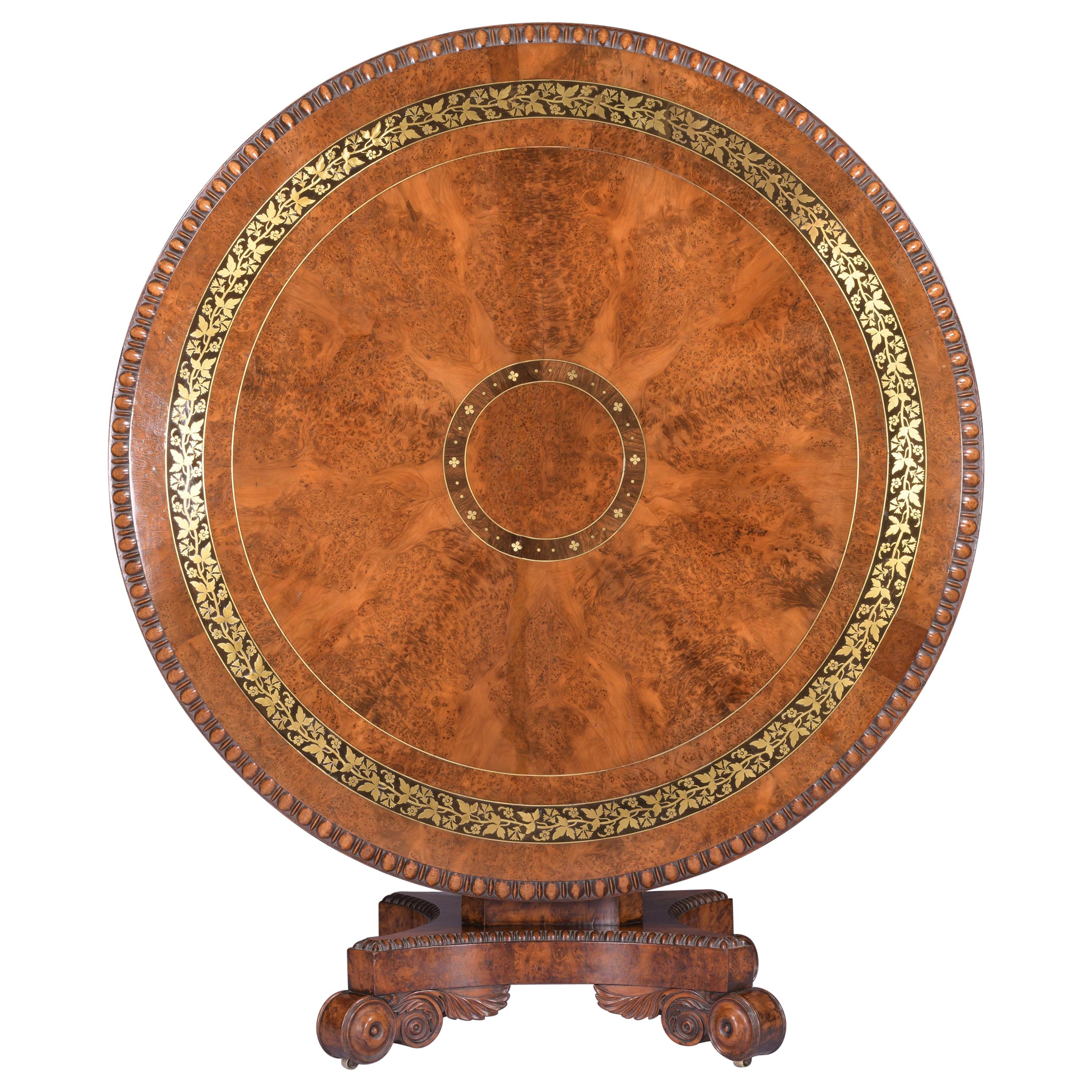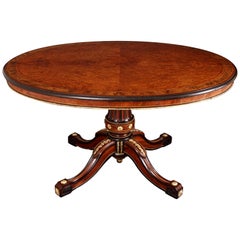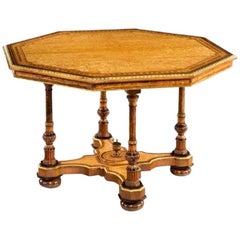
Exceptional Ormolu-Mounted Centre Table Firmly Attributed to Holland & Sons
View Similar Items
Want more images or videos?
Request additional images or videos from the seller
1 of 5
Exceptional Ormolu-Mounted Centre Table Firmly Attributed to Holland & Sons
About the Item
- Attributed to:Holland & Sons (Cabinetmaker)
- Dimensions:Height: 29 in (73.66 cm)Width: 52 in (132.08 cm)Depth: 30 in (76.2 cm)
- Style:Louis XVI (In the Style Of)
- Materials and Techniques:Boxwood,Bronze,Mahogany,Ormolu,Sycamore,Wood,Gilt
- Place of Origin:England
- Period:Mid-19th Century
- Date of Manufacture:circa 1860
- Condition:Wear consistent with age and use.
- Seller Location:London, GB
- Reference Number:Seller: 85471stDibs: LU954715498002
About the Seller
5.0
Recognized Seller
These prestigious sellers are industry leaders and represent the highest echelon for item quality and design.
Platinum Seller
These expertly vetted sellers are 1stDibs' most experienced sellers and are rated highest by our customers.
Established in 1964
1stDibs seller since 2012
42 sales on 1stDibs
Typical response time: 3 hours
Associations
The British Antique Dealers' AssociationLAPADA - The Association of Arts & Antiques Dealers
More From This SellerView All
- 19th Century English Walnut and Ormolu Mounted Centre TableBy Holland & SonsLocated in London, GBA very fine and substantial centre table in the Louis XVI in the Manner of Holland & Sons Of exceptional quality, utilising beautifully grained woods, including Circassian walnut,...Category
Antique Mid-19th Century British Louis XVI Center Tables
MaterialsOrmolu
- Exceptional Carved Giltwood Centre Table in the Louis XIV StyleLocated in London, GBAn exceptional giltwood table de Milieu in the Louis XIV style A true carver's delight, the giltwood center table of rectangular form supported on four baluster form legs interjoined by a stretcher, the free-standing table incorporating pierced scrolling aprons carved from solid wood to all the sides, the front and back decorated with a central female mask and flanking bearded male masks to the legs, while the sides are dressed with shell...Category
Antique 19th Century French Louis XIV Center Tables
MaterialsMarble
- 19th Century Mahogany, Marble and Ormolu-Mounted Writing TableLocated in London, GBA bureau plat in the Louis XVI manner Constructed in mahogany, Carrara marble, and extensively dressed with fine ormolu mounts; of freestanding rectangular form, rising from field...Category
Antique 19th Century British Louis XVI Tables
MaterialsCarrara Marble, Ormolu
- 19th Century Coromandel and Inlaid Table Attributed to Jackson & GrahamBy Jackson & GrahamLocated in London, GBA magnificent library table Attributed to Jackson & Graham Of free standing rectangular form, constructed in coromandel, with inlays in thuya, ebony, boxwood, and honeysuckle; the fluted legs rising from square brass castor-shod feet; the frieze housing two lockable drawers fitted with rare ‘tamper proof’ Chubb locks and having quadrant moulded cedar lined interiors; the platform having a central panel of beautifully chosen matched coromandel veneers, with an outer guard border of a running pattern of stylised anthemions; the ebony edges having a thumb nail moulding, circa 1865 The firm of Jackson & Graham established in 1836 by Thomas Jackson and Peter Graham at 37 Oxford Street London, and for the next fifty years produced predominately high quality furniture and represented Britain at many of the international exhibitions. Their clients included Queen Victoria, Napoleon III, the Grand Khedive of Cairo and the royal palace in Siam. They were particularly noted for their fine marquetry work, the use of Wedgwood plaques, rare woods, and fine casting of bronze mounts. They engaged the leading designers of the period, inter alia, Owen Jones, Bruce Talbert, Alfred Lorimer and Eugene Prignot. In the mid-1850s the workforce was recorded as 250, and by 1875, the company was employing 600 workers. They were feted exhibitors at many of the Great Exhibitions of the 19th century, and frequent prize winners. At the Paris International Exhibition of 1878, the furniture jury noted of them ‘ the workmanship is so perfect that even with the aid of a magnifying glass scarcely the slightest imperfection is to be found’. In 1885 the company was absorbed by Collinson and Lock, who continued their standard of excellence. Charles Chubb was apprenticed as a blacksmith before starting business as a ships’ ironmonger in Winchester. Jeremiah soon joined the business, and by 1818 the brothers had branched out into lockmaking, founding the famous Chubb Company. The business really got started when Jeremiah Chubb patented his new ‘detector lock’ in 1818. The lock was constructed so that if someone tried to pick it or open it with the wrong key it became inoperable. To make the lock work again the owner had to use a special key supplied with the lock. The aim of the detector lock was to prevent burglaries, and to warn the owner that someone had tried to break into their property. The lock soon became popular, and sales of the Chubbs’ products increased even more when they won a government competition to design a lock that could only be opened using its own key. After the invention of the detector lock, the Chubbs decided to move to Wolverhampton, which already had an established lock making industry. By 1838 they were making 28,000 locks a year at their Wolverhampton factory. Another product was added to the Chubb range in 1835 when a patent was taken out for a burglar resistant safe, and in 1837 the Chubb safe...Category
Antique 19th Century English Tables
MaterialsBrass
- 19th Century Parquetry Centre Table in the Louis XVI Manner by François LinkeBy François LinkeLocated in London, GBA Louis XVI style parquetry centre table firmly attributed to François Linke Constructed in Kingwood, Tulipwood and Mahogany, with foliate inlay work, parquetry and Fine ormolu b...Category
Antique 19th Century French Louis XVI Center Tables
MaterialsBronze, Ormolu
- Mid-19th Century Amboyna Octagonal Centre TableBy Johnstone, Jeanes & Co.Located in London, GBA good centre table by Johnstone & Jeanes of London Constructed in amboyna, with extensive marquetry inlays in specimen woods, and enhanced with parcel-gilt highlights. Rising from a cruciform platform base adorned with knops and having concealed castors, supporting the inlaid, and gently stepped and tapering centre column with stylized 'c' form brackets bracing the octagonal top, the outer guard band having English roses inlaid at the angles, with foliates with the national emblems of Scotland and Ireland, thistles and shamrocks. Stamped by the makers to the underside, 'Johnstone & Jeanes 67 Bond Street'. circa 1845 Published in “British Furniture 1820 to 1920” by Christopher Payne, 2023, p. 131, illustrated fig. 3.21. Johnstone, Jeanes & Co John Johnstone of Bond Street came to prominence after his collaboration with Robert Jupe, an 'upholder' of 47 Welbeck Street, Cavendish Square, London, who patented a remarkable design for a circular expanding dining table with a segmented top in 1835. After Jupe's death, the firm traded as 'Johnstone and Jeanes' from 1842 until 1880, having moved to 67 Bond Street and continuing the tradition of producing high quality furniture. After 1880, the company was re-named Johnstone & Norman. They exhibited at the Great Exhibition 1851, The International Exhibition of London in 1862, and The Paris Exhibition of 1878. Both the Royal Collection Trust and the Victoria & Albert Museum own stamped pieces of furniture in their collections. The company of Crace were designers and decorators to the Royal household from 1768 until 1899, working for every monarch from George the Third...Category
Antique Mid-19th Century English Center Tables
MaterialsAmboyna, Wood
You May Also Like
- Exceptional 19th Century Centre Table Attributed to Holland & SonsBy Holland & SonsLocated in London, by appointment only• One of the finest pieces of 19th century English furniture ever made • Firmly attributed to the Royal cabinetmaker, Holland & Sons • Made using stunning rare & exotic timbers, Th...Category
Antique Mid-19th Century British Early Victorian Center Tables
MaterialsOrmolu
- Hungarian-Ash Centre Table Attributed to Holland and SonsLocated in Lymington, HampshireThis exhibition quality table is attributed to Holland and Sons. The octagonal top is supported by four turned knopped legs, all joint by a solid shaped stretcher centred on an urn. ...Category
Antique 1860s English Center Tables
MaterialsAsh
- Burr Walnut and Ormolu-Mounted Centre Table with Superb Quartered Veneered TopBy Holland & SonsLocated in Lymington, HampshireAn exhibition quality burr walnut and ormolu-mounted centre table with superb quartered veneered top. Attributed to Holland and Sons or Gillows.Category
Antique Mid-19th Century British Center Tables
MaterialsOrmolu
- Late Regency Giltwood Centre Table Attributed to GillowsBy Gillows of Lancaster & LondonLocated in Lymington, HampshireA very attractive antique late Regency giltwood centre table attributed to Gillow of Lancaster and London, inset with an Italian Pietra Dura top, The central turned baluster supp...Category
Antique Early 19th Century English Regency Center Tables
MaterialsGiltwood
- Louis XV Style Ormolu-Mounted Parquetry Circular Centre TableLocated in London, GBLouis XV style gilt bronze and parquetry circular centre table French, 19th Century, Height 77cm, Diameter 85cm Made in France in the 19th century, this excellent table is in the ri...Category
Antique 19th Century French Louis XV Center Tables
MaterialsOrmolu
- Centre Table Attributed to Holland and Sons Related to a Table in Clarence HouseLocated in Lymington, HampshireA centre table attributed to Holland and Sons related to a table in Clarence House, this exceptional table has a circular top decorated with six radiating amboyna veneers with a border of concentric marquetry rings. The decoration comprising kingwood bands within boxwood stringing, a continuous boxwood laurel wreath with ivory berries on a satinwood ground and further amboyna borders. The frieze has amboyna crossbanding and applied ormolu sunburst medallions. The support is composed of purpleheart columns inlaid with kingwood, terminating in low splayed feet, which encircle a classical urn on a plinth. The superb ormolu mounts include acanthus leaves, classical masks and patera. English, circa 1860. A table with a similar base and particularly fine ormolu mounts was exhibited by Holland and Sons in the International Exhibition in 1862 and illustrated as plate 40 in J. B. Waring’s book (see pages 100-103 for further references to this exhibition). A further closely related piece was in the collection of the late Queen Elizabeth the Queen Mother and is shown in the Morning Room in Clarence House in the Daily Mail’s article ‘Inside the private world of Prince Charles’, November 2018. Originally founded by Stephen Taprell and William Holland...Category
Antique 1860s English Center Tables
MaterialsBoxwood, Kingwood, Satinwood, Amboyna
